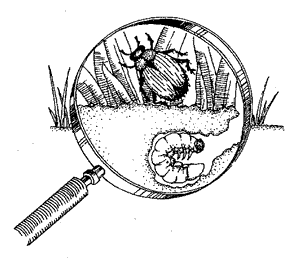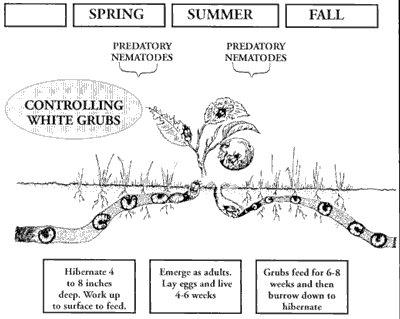Identifying Japanese Beetles
 |
Japanese beetles are shiny metallic green beetles with copper-brown wings, about 1/2 inch long. They eat plant foliage and fruit in yards and gardens and can do major damage in a short period of time. Japanese beetle larvae are grayish-white grubs, with dark brown heads. They live in the soil and damage lawns by feeding on grass roots. They also destroy young seedlings in gardens.
The problem with Japanese beetles is that although you control them on your property a certain number return every year because they can fly in from anywhere within a 5 mile radius. While they are most common in the eastern half of the US, they are inexorably moving westward.
Their Growth Stages
 |
After mating in late July and early August the females lay white, spherical eggs, a few at a time, in the soil. Upon hatching, the larvae, called white grubs, burrow through the soil, feeding on decaying vegetation initially, then progressing to lawn grass roots. As the weather gets cold they burrow down into the soil more deeply to wait for spring.
In early spring, the grubs move back up into the root zone of the lawn grass for a final meal before turning into pupae and then emerging from the soil as adult beetles in late June or early July. For the next month or so the beetles fly about, pausing only long enough to feed on lovely landscape plants and mate.

